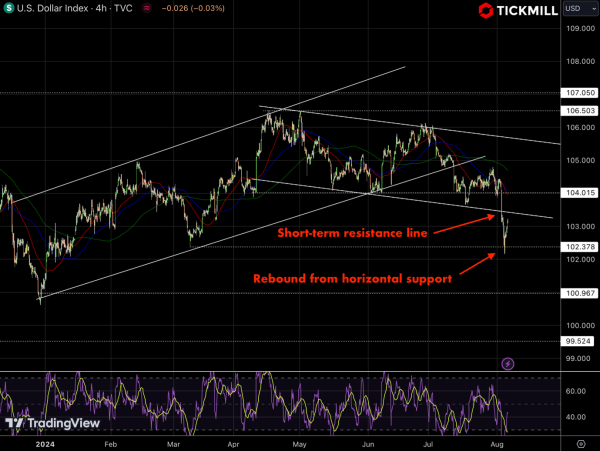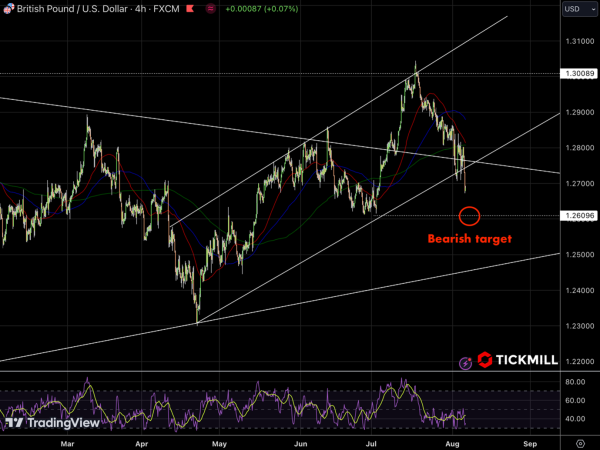USD Bounces Back Against JPY Amidst Fed, RBA Reassurances; Equities Soar, GBP Under Pressure
The US Dollar staged a robust recovery against the Japanese Yen on Tuesday, effectively countering concerns about the extended unwinding of carry trade positions, which had triggered Monday's stock market bloodbath. This bullish momentum traces back to Monday's US trading session, spurred by calming remarks from Austan Goolsbee, President of the Federal Reserve Bank of Chicago. Goolsbee emphasized that a few softer data points aren't sufficient to trigger recessionary concerns, soothing investor nerves.
The Reserve Bank of Australia's (RBA) President Michelle Bullock echoed similar sentiments, suggesting that despite the RBA’s decision to keep interest rates unchanged in August, another rate hike remains on the table. This stance further fortified the market's confidence.
Last week’s market sentiment was tinged with apprehension as the specter of a US recession loomed larger. The rise in the Unemployment Rate to 4.3%, the highest since November 2021, coupled with a lackluster US Manufacturing PMI, signaled a slowdown in economic activity. Adding fuel to the fire, geopolitical tensions surged with potential conflict between Israel and Iran, which effectively keeps risk sentiment on edge.
On the economic front, Monday’s ISM data release was a game-changer. The services sector PMI expanded more than expected, reigniting the USD's appeal. As we move through the week, the spotlight shifts to the US Trade Balance data for June. Although not a market mover, this data point provides additional context for the broader economic picture.
Equity markets responded with enthusiasm, as the Japanese Nikkei and Topix indices soared by 10% each on Tuesday. European markets followed suit with solid gains, and the US futures market saw the Nasdaq leading the charge, climbing nearly 2%.
US federal funds rate futures an interesting picture of market expectations. There’s a 73.5% probability of a 50 basis points (bps) interest rate cut by the Federal Reserve in September, with a 54.5% chance of a further 25 bps cut in November. The possibility of a 50 bps cut stands at 29.7%, while there's a 15.8% chance of no cut at all for that meeting.
With a sparse US economic data calendar ahead, the risk of disappointing data is minimal. This scenario provides the DXY (US Dollar Index) room to potentially retrace its steps back to July levels:

The Pound Sterling remains under pressure, dipping below the 1.2700 mark against the USD during Tuesday’s New York session. The pair's weakness stems from the USD's resurgence after bouncing off a fresh six-month low. Domestically, the GBP will be influenced by speculation surrounding the BoE’s next moves, especially given the absence of high-impact events.
Last week, the BoE implemented a 25 bps rate cut, bringing the rate to 5%, with a closely split 5-4 vote. The BoE's cautious approach to policy normalization suggests a measured path forward, particularly in the face of potential ripple effects from a US slowdown.
The GBP/USD pair is exhibiting a pronounced downtrend, as evidenced by its recent fall below the 1.2700 level. The chart shows a clear break from the ascending channel, which suggests a potential continuation of the bearish momentum. The bearish target is identified around the 1.2610 mark, aligning with previous support levels and coinciding with July’s bottom. RSI indicators also signal bearish conditions, further supporting the likelihood of the pair testing lower levels in the near term:
